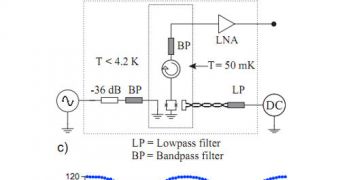The first experimental evidence that the Casimir effect actually exists were obtained by researchers from the Chalmers University in Sweden. Using a rapidly-moving mirror, virtual photons were turned into real ones, the team reports.
The dynamical Casimir effect manages to confirm one of the most interesting and surprising predictions included in modern quantum theories, which holds that particles whiz in and out of existence even in vacuum.
According to these predictions, elementary particles appear out of nowhere, pair up, annihilate each other, and then disappear entirely. If this were true, experts proposed a decade or so ago, then the theory should be able to be proven.
“One of the most surprising predictions of modern quantum theory is that the vacuum of space is not empty. In fact, quantum theory predicts that it teems with virtual particles flitting in and out of existence,” Wilson says.
Since 1948, physicists have been carrying out experiments in which two flat mirrors were held very close to each other, and parallel to one another. If the predictions were true, then these two surfaces should theoretically be pushed away from each other by the elementary particles.
This is known as the static Casimir effect, and two research teams in the United States managed to demonstrate that it exists through measurements conducted in 1998, Technology Review reports.
On the other hand, the dynamical Casimir effect is a bit different, and concerns the behavior of the particles emerging and disappearing in empty space when they pop up between two flat mirror moving at relativistic speeds (reaching a significant proportion of the speed of light).
Whenever the two mirrors move slowly, the particles within can adapt. However, when the mirrors reach a relativistic speed, some of the photons that spring in and out of existence lose their pairs.
The end result of all of this is the ability to produce light out of nothing, using only two mirrors. The experimental setup to test this is however tremendously complex. Until now, it was nearly impossible to conduct the validating experiments.
But Wilson and his team used a superconducting quantum interference device (SQUID) to accelerate the analog of two mirrors on an transmission line just 100 micrometers long. The mirror simulation moved only about a nanometer in each direction, but at 5 percent the speed of light.
After the system was set into motion, photodetectors installed near the experiment detected photons emitted in the microwave portion of the electromagnetic spectrum.”We believe these results represent the first experimental observation of the dynamical Casimir effect,” the team concludes plainly.

 14 DAY TRIAL //
14 DAY TRIAL //